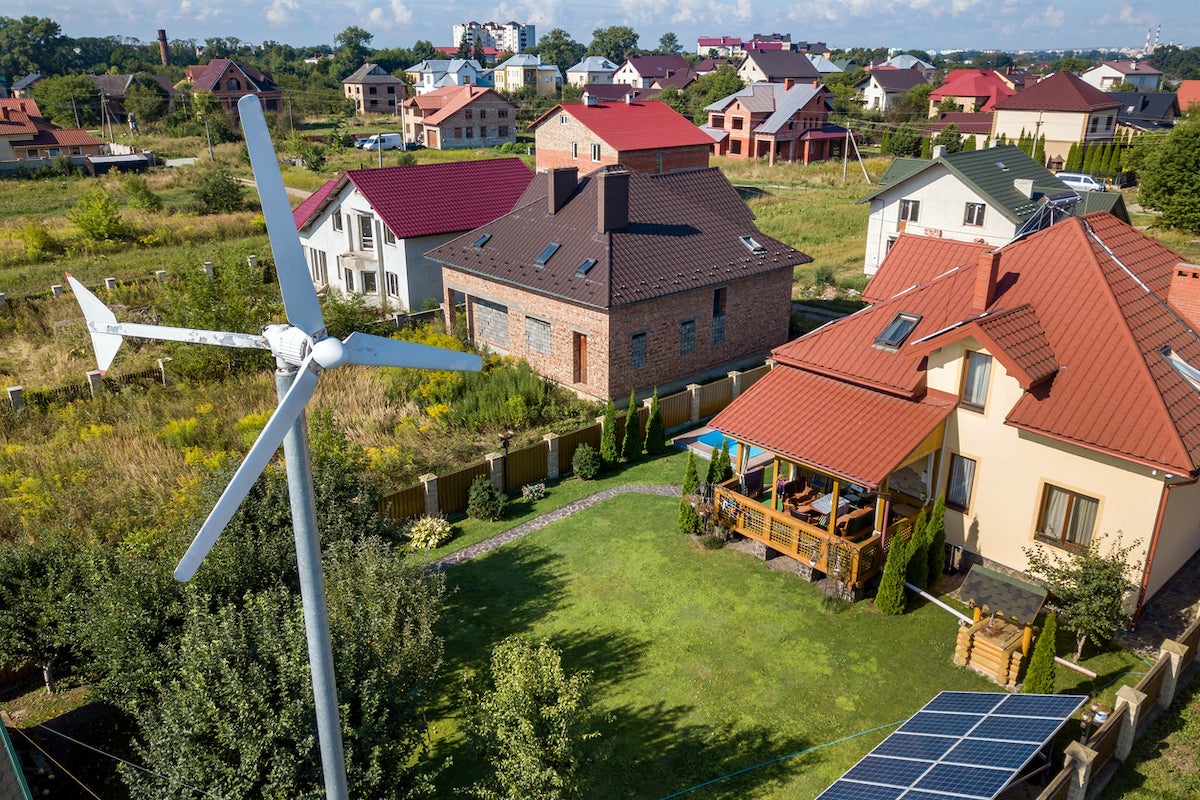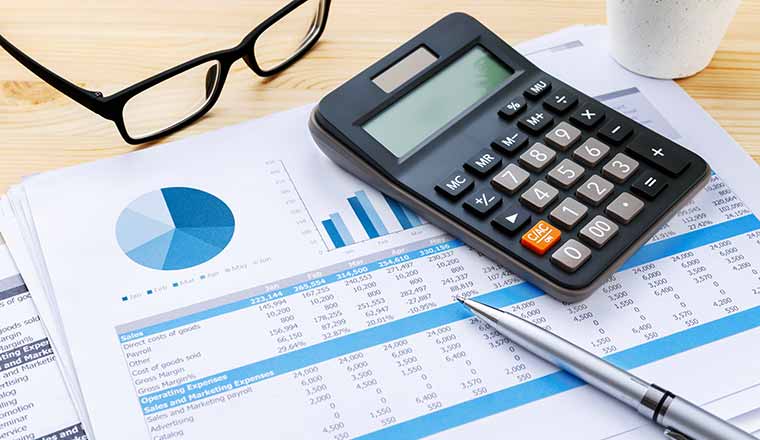
Wind turbines for the home are little versions of the massive turbines that are often seen along the sides of highways. These turbines harness the kinetic energy of the wind to produce clean electricity. A residential system is significantly more compact than industrial wind farms, which employ blades with blades that can produce a diameter of up to 130 feet, which is about the same length as a football field.
If you live in a region that receives adequate wind, installing residential wind turbines may reduce your monthly energy expenses by 50–90%, offer an uninterrupted power supply even during lengthy outages, and do it with no emissions or pollution. In addition to being one of the most cost-effective renewable energy systems that can be installed in a house, wind turbines may also be used for other uses, such as pumping water for irrigation, which can be useful in agricultural settings such as ranches and farms.
What Is a Home Wind Turbine?
A generator, a pole, and a blade make up the components of a wind turbine. The blade functions in a manner that is similar to that of an aircraft wing. When wind blows through both sides of the blade, the distinctive form of the blade causes the wind pressure to become uneven, which in turn causes the blade to spin. At this point, technology has surpassed the capabilities of the conventional windmill.
The machine is maintained in the optimal operating position by a computer that receives data from a weather vane located on the machine’s roof. The blades only move at a pace of around 18 revolutions per minute, which is not fast enough to create energy on their own. As a result, they are connected to a rotor shaft and a set of gears that assist enhance the rotation to approximately 1,800 revolutions per minute.
When it comes to the creation of electricity, bigger turbines have the potential to pack a significant punch due to the fact that the wind speed increases with altitude. If you live in a remote region without access to a power grid, a home wind turbine might be a good solution for your energy needs; but, house wind systems can also link to an existing electric grid through your power provider.
Is a Home Wind Turbine Right for Me?
The proper operation of residential wind turbines calls for a particular approach to both planning and maintenance. First, prospective purchasers need to do an assessment of the site’s wind resource and investigate the possibility of zoning conflicts in the area. First and first, you will need to determine whether or not your region even permits the installation of tiny wind energy equipment.
Examine the Condition of Your Home
To begin, it is recommended that you get in touch with your local building inspector, your board of supervisors, or your planning board. They will be able to provide you with information on the standards and whether or not you will need a building permit. Be ready with objective statistics to answer these concerns if you have neighbors or a homeowners association; they may be worried about a wind turbine’s aesthetics or noise level. If you have neighbors or a homeowners association, be prepared to address their concerns.
When looking at purchasing a house turbine, it is helpful to know information such as height restrictions. The majority of zoning rules stipulate that constructions cannot exceed a height of 35 feet. The United States Department of Energy states that the majority of residential wind turbines produce a sound that is only marginally louder than the background noise caused by the wind, and that “although the sound of the wind turbine may be picked out of the surrounding noise if a deliberate effort is made to hear it, a home-sized wind turbine is not a significant source of noise under most wind conditions.”
Calculate the Potential of Your Wind Resources
More of us don’t know how much of an impact the local geography has on the wind levels. The fact that it seems windy in one location does not suggest that a region a few miles away is experiencing the same level of gustiness. A wind resource map, which can be found on the United States Office of Energy Efficiency and Renewable Energy website and is arranged in a state-by-state format, is an excellent location to begin your investigation. You might also look at the wind speed data from a nearby airport, or you could check to see if there is a local small wind system with yearly output data and wind speed data.
Readings may be taken at the precise height on the top of the tower where the wind turbine would be erected if direct monitoring by a professional wind resource system is performed at your location. This kind of measurement provides the most accurate readings possible. However, they may be rather dear, with prices ranging anywhere from $600 to $1,200.
Do the Math
Determine whether installing a wind energy system in your house is worthwhile from a financial perspective by factoring in the total cost of components such as the system’s production, savings, and return on investment. Use the small wind consumer guides provided by the Department of Energy to assist you in estimating the costs associated with purchasing the machine, the amount of money you stand to save as a result of making the switch, and the amount of time it will take for you to regain your initial capital investment. If you hire a professional to install your home turbine, they should also be able to assist you estimate your expenditures.
The expenses associated with the installation of a free-standing wind turbine in a residential setting are variable and may change based on the location, output, and size of the machine. For instance, the price of a modest wind power installation in the San Francisco region might range anywhere from $5,000 to $40,000, depending on the kW capacity of the system. 2 A typical single-family house in the area consumes somewhat more than 5,000 kilowatt-hours of energy each year, which means that the turbine needed to power the home must have a power output of between 1 and 5 kilowatts.

Alternative Forms of Environmentally Friendly Energy
There are a plethora of different choices available for sustainable energy if your house or site is not conducive to wind energy generation. An installation of solar panels is one of the most common kinds of long-lasting renewable energy sources, and hybrid systems that combine solar and wind power are gaining popularity in the United States.
